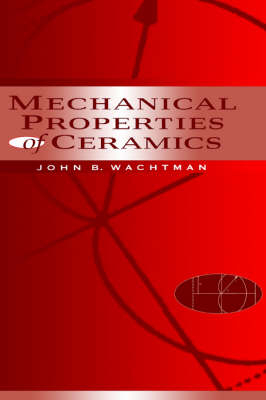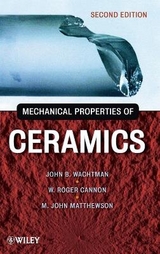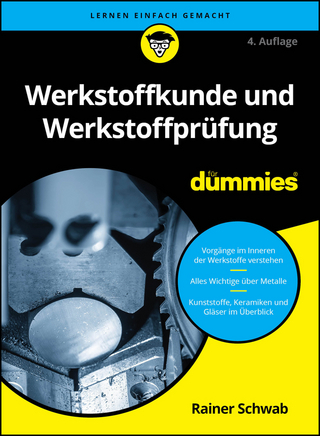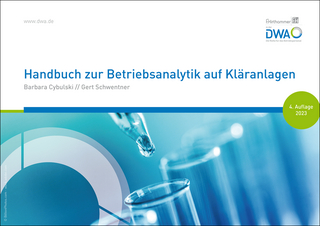
Mechanical Properties of Ceramics
John Wiley & Sons Inc (Verlag)
978-0-471-13316-2 (ISBN)
- Titel erscheint in neuer Auflage
- Artikel merken
Mechanical Properties of Ceramics is a comprehensive and self-contained text that interweaves basic elements with advanced topics, theory with practical applications, and a general treatment with detailed examples. When failure occurs in ceramic materials, it is often catastrophic--instantaneous and total. The nature of ceramics makes them especially susceptible to flaws built in during processing and to surface damage from assembly and service. Use of ceramics to carry loads requires understanding of failure modes and proper design to avoid failure. Mechanical Properties of Ceramics deals thoroughly with causes of mechanical failure of ceramics (including glass) and design for failure avoidance. Experimental facts and theoretical foundations for mechanical behavior are treated. Probabilistic and mechanistic methods of safe design are described and combined to provide design techniques both for moderate temperatures (brittle behavior) and high temperatures (creep behavior). The competing roles of microstructure in weakening and toughening ceramics are explored and interpreted in terms of reliability improvement through processing for controlled and tailored microstructures.
Drawing on his own extensive research experience in the field, Professor John Wachtman evaluates several decades of developments and improvements in theory, experiment, and microstructure. He sorts through numerous sources, cites early works with classic status as well as contemporary advances, and explores the primary aspects of ceramic mechanical behavior in an accessible way, helping materials scientists and engineers achieve desirable mechanical properties. The book's first three chapters provide readers and students new to the field with the background and fundamentals they will need to understand more advanced material. This coverage includes a mathematical treatment for continuum mechanics and the role of defects in different circumstances. The main body of the text presents the basic science of the mechanical properties of ceramics and deals with the behavior of ceramics under a wide range of environments, temperatures, and loading conditions.
The book's final six chapters present tables and figures showing representative data on mechanical properties of important types of ceramics, including glass, traditional polycrystalline ceramics, advanced polycrystalline structural ceramics, and composites. An excellent textbook for students at the beginning, intermediate, and advanced levels, Mechanical Properties of Ceramics is also a helpful guide for professionals in the business of producing and designing ceramic structures and devices. A comprehensive reference on the theory and applications of the mechanical behavior of ceramics Understanding the mechanical behavior of ceramics is crucial to the prevention of catastrophic failures that occur when the material suddenly breaks under load as a result of crack propagation. This combined text and reference shows how to account for all the variables when designing and producing microstructures or ceramic devices, and offers a cohesive theoretical treatment of the fundamental science of this dynamic field of research.
Mechanical Properties of Ceramics features a broad range of information, useful for scientists and engineers as well as students in materials science, ceramics, or related fields: A basic introduction to stress, strain, and elasticity of ceramics, which assumes no prior background in mechanics The fundamentals of mechanical behavior explained simply and set in a more advanced context, covering the main aspects of behavior in quantitative terms, including flaws and behavior under various types of loading The influence of microstructure, its role in the design/development stage of ceramic materials, and considerations for quality control in processing to achieve reliability Helpful tips on safety and lifespan under specific conditions for engineers in other disciplines who design ceramic devices or structures Reference chapters that provide data on each of the major types of structural ceramics Figures and tables for specific ceramic materials, including glass and the four major families of advanced polycrystalline structural ceramics (alumina, silicon nitride, silicon carbide, and zirconia) Summaries of test procedures, complete with equations for stress, strain, and fracture mechanics parameters
JOHN B. WACHTMAN, PhD, is Sosman Professor of Ceramics at Rutgers University, where he has taught since 1983. Since he received his degree from the University of Maryland in 1961, he has worked as a research scientist, division chief, and as the director of the Center for Materials Research at the National Bureau of Standards. Professor Wachtman is the author of Characterization of Materials and holds many honors, awards, and offices in various scientific societies.
Partial table of contents: Stress and Strain. Types of Mechanical Behavior. Elasticity. Strength of Defect--Free Solids. Linear Elastic Fracture Mechanics. Statistical Treatment of Strength. Subcritical Crack Propagation. Stable Crack Propagation and R--Curve Behavior. An Overview of Toughening Mechanisms in Ceramics. Toughening by Transformation. Cyclic Fatigue of Ceramics. Thermal Stress and Thermal Shock in Ceramics. Fractography. Dislocations and Plastic Deformation in Ductile Crystals. Dislocations and Plastic Deformation in Ceramics. Creep in Ceramics. Mechanical Properties of Glass and Glass--Ceramics. Mechanical Behavior of Aluminum Oxide. Mechanical Properties of Silicon Carbide. Mechanical Properties of Porous Ceramics. References. Index.
| Erscheint lt. Verlag | 13.6.1996 |
|---|---|
| Reihe/Serie | Wiley interscience |
| Zusatzinfo | Ill. |
| Verlagsort | New York |
| Sprache | englisch |
| Maße | 164 x 240 mm |
| Gewicht | 765 g |
| Einbandart | gebunden |
| Themenwelt | Naturwissenschaften ► Chemie |
| Technik ► Maschinenbau | |
| ISBN-10 | 0-471-13316-7 / 0471133167 |
| ISBN-13 | 978-0-471-13316-2 / 9780471133162 |
| Zustand | Neuware |
| Haben Sie eine Frage zum Produkt? |
aus dem Bereich



